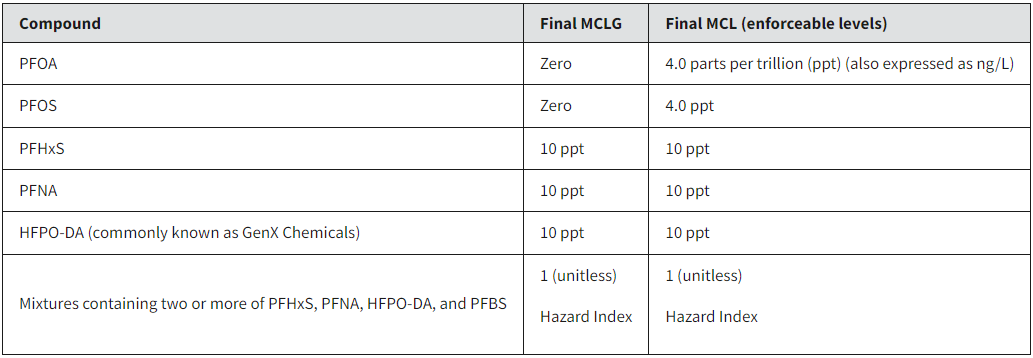On April 10, 2024, EPA announced the final National Primary Drinking Water Regulation (NPDWR) for six PFAS. To create the rule, EPA evaluated over 120,000 comments submitted by the public, as well as input received during multiple consultations and engagement activities. EPA expects that the final rule will prevent PFAS exposure in drinking water for approximately 100 million people, prevent thousands of deaths and tens of thousands of serious illnesses.
EPA also designated two widely used PFAS – PFOA and PFOS – as hazardous substances under the Comprehensive Environmental Response, Compensation, and Liability Act.
Recently, EPA established legally enforceable levels, called Maximum Contaminant Levels (MCLs), for six PFAS compounds in drinking water. EPA also finalized health-based, non-enforceable Maximum Contaminant Level Goals (MCLGs) for these PFAS.

- Public water systems must monitor for these PFAS and have three years to complete initial monitoring (by 2027). Water systems must also provide the public with information on the levels of these PFAS in their drinking water beginning in 2027 and will be monitored for compliance.
- Public water systems have five years (by 2029) to implement solutions that reduce these PFAS if monitoring shows that drinking water levels exceed maximum levels.
- Beginning in five years (2029), public water systems that have PFAS in drinking water which violates one or more of these maximum levels must take action to reduce PFAS in their drinking water and must provide notification to the public of the violation.
